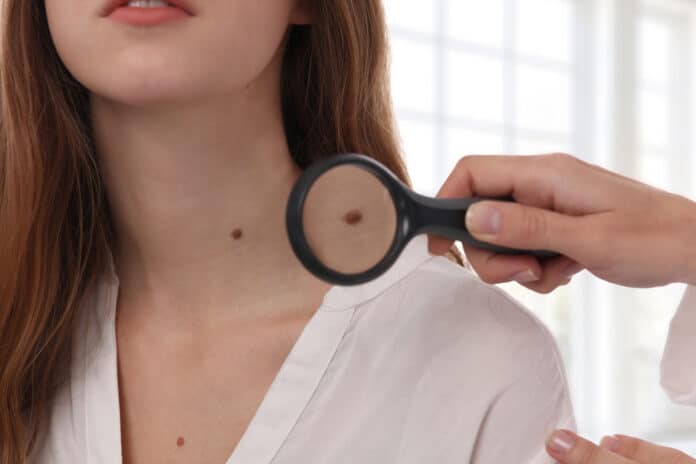
Do you know that seeing unusual moles, sores, lumps, and blemishes on your skin can signify melanoma? This article will show you how to spot the disease or warning signs it might happen.
What is Melanoma Skin Cancer?
Melanoma is a type of skin cancer that happens when melanocytes (cells responsible for the skin’s tan or brown color) start growing out of control. The disease is rarer than some other types of skin cancers. However, melanoma is more dangerous because it’s more likely to spread to other body parts if not treated early.
Do Moles Indicate Skin Cancer?
A normal mole is usually evenly colored, tan, brown, or black. Some moles are present at birth, but most appear in childhood or young adulthood. Once a mole has developed, it stays the same size, shape, and color for a long time, while some eventually fade.
While most moles are harmless, it’s essential to notice when they change in shape, size, or color, as this could indicate the early stages of melanoma.
Possible Signs and Symptoms of Melanoma
The most vital warning sign for the disease is a spot that changes in size, color, shape, or a new spot on the skin. Another symptom is the “ugly duckling sign,” which is a spot that isn’t the same as other spots on your skin.
You can also use the ABCDE rule to guide the common signs of melanoma. Examine your skin and inform your doctor if you see any spots with the following features:
A = Asymmetry: One-half of a birthmark or mole doesn’t match the other.
B = Border: The edges are ragged, irregular, notched, or blurred.
C = Color: The color isn’t the same all over, and it might include shades of brown or black. Sometimes, there could be pink, red, white, or blue patches.
D = Diameter: The spot is more significant than 6 millimeters wide (the size of a pencil eraser). However, melanoma could be smaller than this.
E = Evolving: The mole changes in size, color, and shape.
Sometimes, melanomas won’t fit these rules. Other warning signs include:
- A sore that refuses to heal
- Pigment spreading from the border of a spot into the surrounding skin
- Redness or a new swelling extending beyond the border of the mole
- Change in the surface of a mole. This could be scaliness, bleeding, oozing, or the appearance of a lump
- Changes in skin sensation, such as itchiness, tenderness, or pain.
Conclusion
Melanoma treatment is more effective if you get started early. Don’t hesitate to report any spots or skin areas that worry you to your doctor.


















